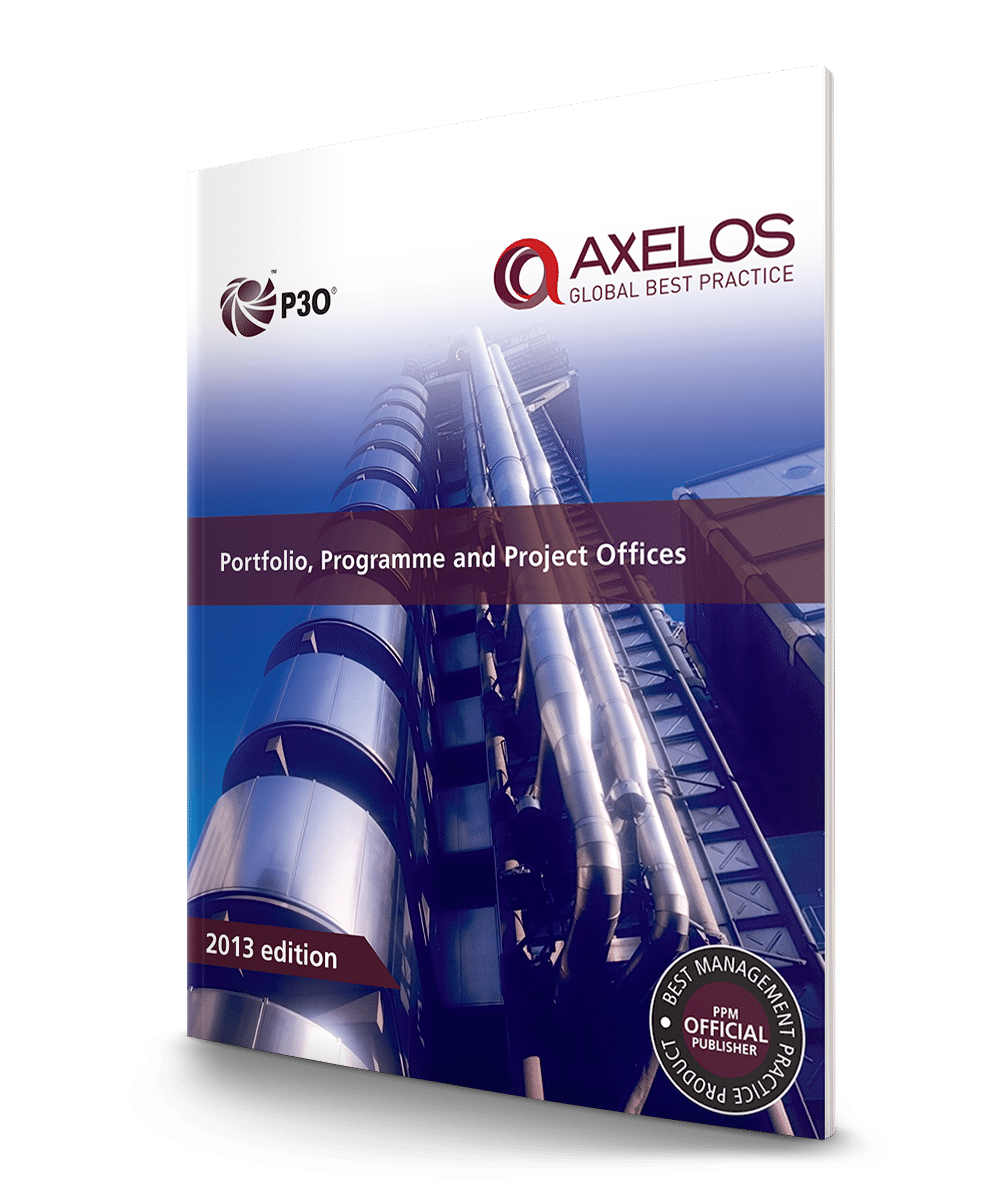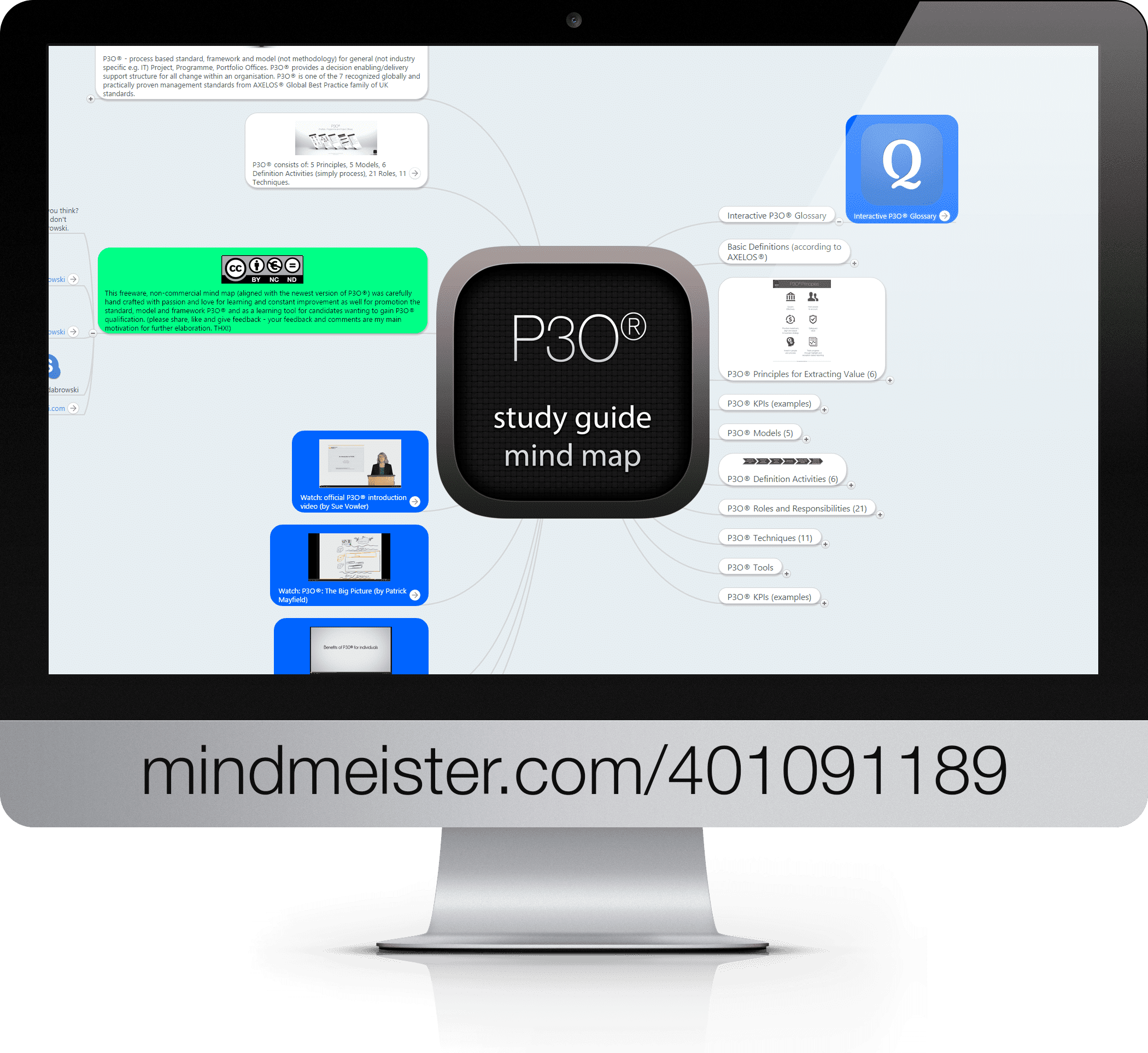This P3O Exam Simulator took countless hours to make (inc. UX). Each question was personally, and meticulously analyzed and verified. Share, like, and pass your exam with flying colours!

500
questions
Score per
category
Answers
explanations(*)
Fullscreen,
focus mode
Questions
flagging
Issue
reporting
*sometimes I will publish a new exam or add questions first (as MVP), and then I will work on explanations in the following days. So, no worries, Houston, everything is okay!
Question Bank
See questions distribution across P3O categories in the questions bank. You need to be proficient in those categories to pass the official P3O Foundation exam.
Materials
Download, free materials from P3O like P3M3 maturity models & Self-assessments for Portfolio, Programmes and Projects, as well the OGC Gateway™ Review Process Workbooks. Also, take a look at the interactive P3O mind map.
P3O Question Bank
Questions categorized according to Portfolio, Programme and Project Office Foundation exam Syllabus
P3O Materials
Additional P3O materials and downloads for self-learning
P3O Syllabus
Official P3O syllabus for Foundation and Practitioner exams
The document was created with training companies in mind, so-called Accredited Training Organizations (ATOs). It provides information on the scope of Portfolio, Programme and Project Office exams, thereby allowing for the design of training and training materials following the requirements of PEOPLECERT so that the training and materials fully prepare candidates for Foundation and Practitioner exams.
Does reading the P3O Syllabus make sense for you?
So what value does this provide for you? By reading the teaching syllabus, you will learn about the scope of P3O exam questions for P3O Foundation and P3O Practitioner exams, and thus, which topics (and to what extent) from the official P3O® Handbook are covered in the exams, and which are not. For example, not everyone knows that the Foundation exam does NOT cover the entire textbook.
P3O Handbook
The main knowledge source for the P3O exams
The official P3O® qualification/exams (Foundation and Practitioner) AND official, accredited P3O® courses are entirely based ONLY on the content covered in the publication below:
- P3O® – Portfolio, Programmes and Project Offices Guidance Manual
- Pages: 222
- ISBN-10: 9925600375
- ISBN-13: 978-9925600373
P3M3® v2.1 –
Portfolio Maturity Model
P3M3 v2.1 Maturity Model for Portfolio Management
This model was created from information gathered as part of the UK’s Cabinet Office and Office of Government Commerce (OGC) research into the concept of portfolio management.
P3M3® v2.1 –
Programme Maturity Model
P3M3 v2.1 Maturity Model for Programme Management
This model was developed from research work undertaken during the preparation of the original version of the Office of Government Commerce (OGC) Managing Successful Programmes (MSP®) framework (which is now owned by PeopleCert International Ltd.) and the subsequent experiences of MSP and the original version of P3M3.
P3M3® v2.1 –
Project Maturity Model
P3M3 v2.1 Maturity Model for Project Management
This model is based on best practice guidance and PRINCE2® publications (now owned by PeopleCert International Ltd.), along with experience gained from the Project Management Maturity Model and the original version of P3M3.
P3M3® v2.1 –
Portfolio Management Self-Assessment
P3M3 v2.1 Self-Assessment for Portfolio Management
P3M3 focuses on 7 Process Perspectives, which exist in all 3 models and can be assessed against 5 levels of maturity. P3M3 (for portfolio maturity) uses a five-level maturity framework and the five Maturity Levels are:
Level 1 – awareness of the process
Level 2 – repeatable process
Level 3 – defined process
Level 4 – managed process
Level 5 – optimized process
The descriptions and characteristics of the five Maturity Levels apply equally to each of the three sub-models – Portfolio, Programme and Project Management. P3M3 recognizes that organizations may excel at project management without having embraced programme management, or indeed vice versa.
P3M3® v2.1 –
Programme Management Self-Assessment
P3M3 v2.1 Self-Assessment for Programme Management
P3M3 focuses on 7 Process Perspectives, which exist in all 3 models and can be assessed against 5 levels of maturity. P3M3 (for programme maturity) uses a five-level maturity framework and the five Maturity Levels are:
Level 1 – awareness of the process
Level 2 – repeatable process
Level 3 – defined process
Level 4 – managed process
Level 5 – optimized process
The descriptions and characteristics of the five Maturity Levels apply equally to each of the three sub-models – Portfolio, Programme and Project Management. P3M3 recognizes that organizations may excel at project management without having embraced programme management, or indeed vice versa.
P3M3® v2.1 –
Project Management Self-Assessment
P3M3 v2.1 Self-Assessment for Project Management
P3M3 focuses on 7 Process Perspectives, which exist in all 3 models and can be assessed against 5 levels of maturity. P3M3 (for project maturity) uses a five-level maturity framework and the five Maturity Levels are:
Level 1 – awareness of the process
Level 2 – repeatable process
Level 3 – defined process
Level 4 – managed process
Level 5 – optimized process
The descriptions and characteristics of the five Maturity Levels apply equally to each of the three sub-models – Portfolio, Programme and Project Management. P3M3 recognizes that organizations may excel at project management without having embraced programme management, or indeed vice versa.
P3M3® v3 –
All Self-Assessment questions for Portfolio level
P3M3 v3 All Self-Assessment questions - Portfolio Level
P3M3® v3 –
All Self-Assessment questions for Programme level
P3M3 v3 All Self-Assessment questions - Programme Level
P3M3® v3 –
All Self-Assessment questions for Project level
P3M3 v3 All Self-Assessment questions - Project Level
Review 0: Strategic Assessment
Step 0 of OGC Gateway™ Process
This Workbook supports OGC Gateway Review 0: Strategic Assessment.
This is a programme-only Review that sets the programme in the wider policy or corporate context. This Review investigates the direction and planned outcomes of the programme, together with the progress of its constituent projects. It can be applied to any type of programme, including policy and organisational change. The Review is repeated throughout the life of the programme from start-up to closure; an early OGC Gateway Review 0 is particularly valuable as it helps to confirm that the way forward is achievable before plans have been finalised.
Review 1: Business Justification
Step 1 of OGC Gateway™ Process
This Workbook supports OGC Gateway Review 1: Business Justification.
This is the first project Review, which investigates the Strategic Business Case and proposes a way forward to confirm that the project is achievable and likely to deliver what is required. The Review checks that: stakeholders approve of the intended benefits of the project, linkage with the programme and organisational objectives is clear, the optimum balance of cost, benefits and risk has been identified.
Review 2: Delivery Strategy
Step 2 of OGC Gateway™ Process
This Workbook supports OGC Gateway Review 2: Delivery Strategy.
This Review investigates the assumptions in the Outline Business Case and the proposed approach for delivering the project. If there is a procurement, the delivery strategy will include details of the sourcing options, proposed procurement route and supporting information. The Review will also check that implementation plans are in place.
Review 3: Investment Decision
Step 3 of OGC Gateway™ Process
This Workbook supports OGC Gateway Review 3: Investment Decision.
This Review investigates the Full Business Case and the governance arrangements for the investment decision to confirm that the project is still required, affordable and achievable. The Review also checks that implementation plans
are robust.
Review 4: Readiness for Service
Step 4 of OGC Gateway™ Process
This Workbook supports OGC Gateway Review 4: Readiness for Service.
This Review investigates the organisation’s readiness to make the transition from the specification/solution to implementation; where appropriate it will assess the capabilities of delivery partners and service providers. The Review also confirms that ownership of the project is identified after handover to operational services.
Review 5: Operations Review and Benefits Realisation
Step 5 of OGC Gateway™ Process
This Workbook supports OGC Gateway Review 5: Operations Review and Benefits Realisation.
This Review confirms that the benefits set out in the Business Case are being achieved and that the operational service (or facility) is running smoothly. The Review is repeated throughout the life of the service, with the first Review typically 6-12 months after handover to the new owner and a final Review shortly before the end of a service contract. The Review can also be used on a one-off basis, to check that a project has delivered its intended outputs.
Quality is a habit (Aristotle)
A habit backed by 20 years as a trainer and 15 years as an Enterprise Agile Coach
After over 20 years in IT and personally clearing more than 200 certifications in IT, InfoSec, management, coaching, mentoring, and training, 15 of which have been in Agile Transformations, Agile Leadership and Governance, and more than 10 years as an Accredited MoP, MSP, PRINCE2, PRINCE2 Agile, M_o_R, MoV, P3O, ITIL trainer, it’s time to give something back to the community. Just as many great people helped me along the way, I want to contribute to the community, because the truth is that none of it matters if you don’t share and help others.
Don't be fooled by P3O exam dumps
I hope you will find my exam simulator valuable on your journey. The simulator is not just a tool to help you pass your upcoming P3O Foundation exam, but also to learn and understand the knowledge areas associated with the specific domain you are studying. Passing an exam shouldn’t be the ultimate goal in itself but rather a checkpoint in your never-ending self-development journey. The goal of the P3O Exam Simulator is to provide you with as much learning feedback as possible, so you won’t waste your time memorizing questionable P3O exam dumps or shady P3O question databases with no prior verification of correct answers and with no rationals to questions.
Don’t hesitate to contact me if you have any questions. Moreover, should you encounter any issues, bugs, or typos in the exam, your assistance in enhancing the simulator would be greatly appreciated. Please utilize the pink icon during the exam (under the navigation buttons) to submit any problematic questions for review.
OGC Gateway™ is a trademark of the Office of Government Commerce.
P3O®, MoP®, MSP®, PRINCE2® are a registered trademark of PeopleCert International Ltd.
P3M3®, Portfolio, Programme and Project Management Maturity Model is a registered trade mark of AXELOS Limited.
The Swirl logo® is a registered trade mark of AXELOS Limited, used under the permission of AXELOS Limited.
Their respective organisations own all intellectual property rights of products and logos on this website.
Your voice matters
Feedback appreciated!






















